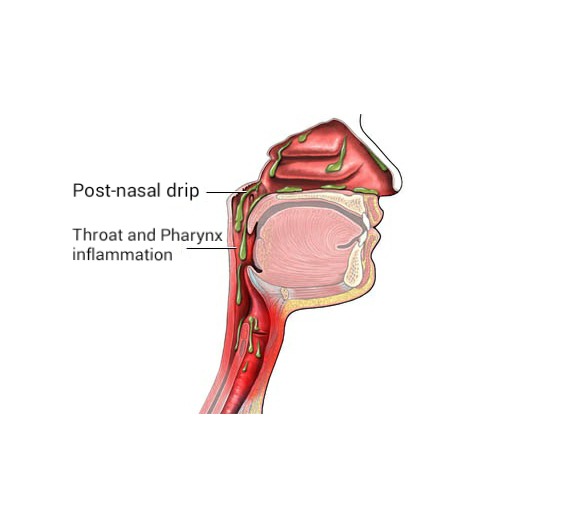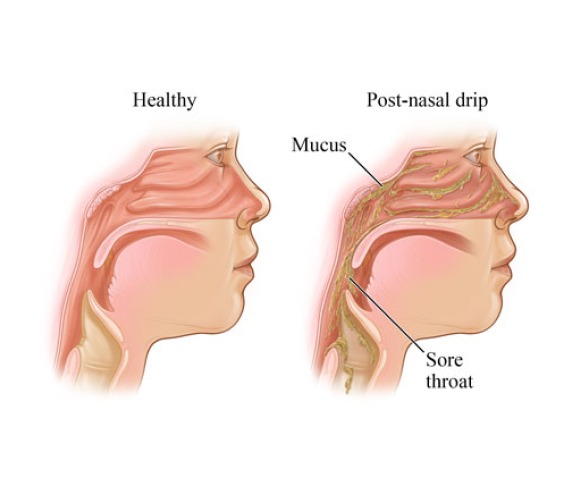Definition
Post-nasal drip is a condition characterized by the excessive production and accumulation of mucus in the back of the throat and nasal passages. This often results in the sensation of mucus dripping down the throat and is a common symptom associated with various underlying causes.

Causes of Post-Nasal Drip:
Post-nasal drip can occur due to several factors, including:
Allergies: Allergic reactions to pollen, dust, mold, or pet dander can trigger excessive mucus production.
Upper Respiratory Infections: Viral or bacterial infections, such as the common cold or sinusitis, can lead to increased mucus production.
Gastroesophageal Reflux Disease (GERD): Stomach acid reflux into the throat can irritate the nasal passages, leading to post-nasal drip
Irritants: Environmental irritants like smoke, pollution, or strong odors can contribute to mucus production
Structural Issues: Deviated septum or nasal polyps can obstruct normal mucus drainage.
Symptoms of Post-Nasal Drip
Post-nasal drip is characterized by various symptoms, which may include:
Sensation of Dripping: Feeling mucus constantly dripping down the throat or into the back of the nose.
Sore Throat: Irritation of the throat due to the presence of excess mucus.
Coughing: Persistent cough, especially at night.
Throat Clearing: Frequent throat clearing to remove mucus.
Bad Breath: Foul-smelling breath can result from mucus accumulation.
Nausea: Excessive swallowing of mucus can lead to an upset stomach.

Treatment of Post-Nasal Drip
Effective management of post-nasal drip depends on its underlying cause:
Allergy Management: Identifying and avoiding allergens is crucial. Antihistamines or nasal corticosteroids may be prescribed.
Infection Treatment: Antibiotics for bacterial infections or antiviral medications for viral infections may be necessary.
GERD Control: Lifestyle changes and medications to manage acid reflux can alleviate post-nasal drip.
Irritant Avoidance: Reducing exposure to environmental irritants like smoke can help.
Nasal Saline Irrigation: Regular use of saline nasal sprays or a neti pot can flush out excess mucus.
Surgery: In cases of structural issues or chronic problems, surgical intervention may be considered.
Management and Prevention
To manage and prevent post-nasal drip:
Hydration: Drinking plenty of water helps thin mucus and promote drainage.
Humidifiers: Using a humidifier adds moisture to the air, reducing throat irritation.
Elevate Head: Sleeping with an elevated head can prevent mucus from pooling in the throat.
Avoid Triggers: Identify and avoid factors that worsen symptoms, such as allergens or irritants.
Regular Check-Ups: Consult a healthcare provider to determine the underlying cause and create a personalized treatment plan.
Summary
Post-nasal drip is the excessive production and accumulation of mucus in the throat and nasal passages, resulting in various discomforting symptoms. It can be caused by allergies, infections, acid reflux, irritants, or structural issues. Treatment options depend on the underlying cause and may involve medications, lifestyle changes, or surgical intervention. Effective management and prevention strategies include hydration, humidity control, and trigger avoidance.
Are you struggling with persistent post-nasal drip?


